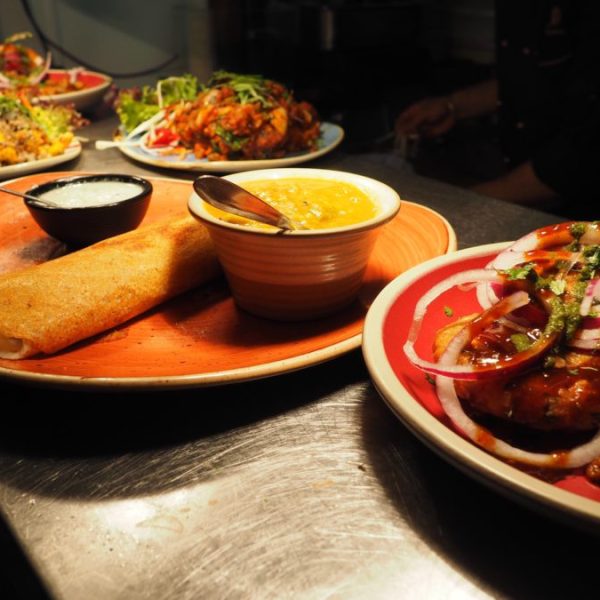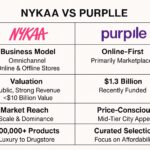https://t.co/98MS1Knnmf pic.twitter.com/hUlJmJD69f
— Strategy Boffins (@StrategyBoffins) January 30, 2022
Zomato IPO :Should you invest ?
June 20, 2021
Industry: Food & Beverage
Subject: Business Aggregator, Startups, Supply Chain

Zomato: Full-stack restaurant service provider
“We did grocery because the food delivery business was gone during the lockdown. For 3-6 months, it worked really well and helped us get through the crisis. And eventually it didn’t make sense. Some companies do different things because they don’t want some of the key people to leave.” – Zomato CEO Deepinder Goyal
Beginning
Zomato was founded by Deepinder Goyal and Pankaj Chaddah as Foodiebay in 2008 and was renamed Zomato on January 18, 2010. In the first year (2008) alone, the platform added more than 1,400 restaurants in the Delhi NCR region. In those initial years, Foodiebay did not spend on publicity or marketing and mostly depended upon word of mouth to grow its user base. The first seed funding worth INR 4.7 Cr into Foodiebay came from Naukri-parent InfoEdge in August 2010. In less than two years after its launch, Foodiebay was able to add 2 Mn customers, 8,000 restaurants, and also expanded into five cities. In 2010, founders decided to rebrand the startup as ‘Zomato’ to reflect its ambitions, and to avoid a possible lawsuit from eBay over the use of the name ‘Foodiebay’.
Zomato did not get into food delivery until 2015 — a year after its main rival Swiggy entered the market. Food delivery economics did not make sense at that time due to lack of demand, and enough supply of riders on the ground. This is evident from startup failures that took place in the market between 2014-2018. Several startups including TinyOwl (drastic end), Foodpanda (now defunct), Spoonjoy, JustEat and even UberEats (exited to Zomato) tried and failed.
The acquisition of B2B logistics provider Runnr in 2017, helped Zomato to kick-start creation of its own delivery fleet. Until then, most restaurants listed on Zomato used their own delivery personnel. Zomato has so far acquired 14 startups around the world, and most of them were focused on supplementing its restaurant discovery and search platform in various countries including Turkey, UAE, and the US. It also made acquisitions in restaurant management technology.
Ownership
Zomato currently counts 74 stakeholders with at least 18 people having stakes of more than 1 percent or more of the paid-up share capital of the company, with founder and chief executive officer Deepinder Goyal holding a 5.5 percent stake.
Info Edge, Zomato’s first institutional investor, which made a Rs 4.7-crore investment in the company in August 2010, has a shareholding worth Rs 7,270 crore ( 18.4 %) as per the latest regulatory filings.
The Ant Group which once owned about 25-26% stake in Zomato has been unable to participate in the company’s pre-IPO round after the government stopped clearing Chinese investments. It holds a 20% stake in the company, worth Rs 7,729 crore.
On the other hand, the total number of options available under the Employees Stock Ownership Plan (ESOP) 2014 is 41,766. In the run up to its IPO, the company has raised close to $910 million, and bought in 10 new investors, including Kora Management LP, Baillie Gifford, Luxor Capital, Steadview, D1 Capital and Mirae Asset on its cap table.
IPO
Zomato filed for its Draft Red Herring Prospectus (DRHP) in late April, kicking off one of India’s most anticipated internet initial public offerings (IPOs) this year. The company will offer equity shares aggregating up to Rs 8,250 crore (nearly $1.1 billion). Of this, Rs 7,500 crore will be a fresh issue, while Rs 750 crore will be an offer for sale for its existing investor, Info Edge.
Investors are hoping that Zomato would follow the successful IPO of SoftBank-backed DoorDash in December, when the US-based food-delivery startup raised around $3.4 billion in the initial share sale, was valued at $34.2 billion, more than double the $15 billion valuation it commanded in the private market a year ago.
As per SEBI rules, if a company has not clocked net profits for the last three financial years, the firm is allowed to come for a listing but has to keep only 10% of the issue reserved for retail investors. So in such a scenario a minimum 75% of the portion will have to be reserved for Qualified Institutional Buyers (QIB), while the remaining 15% can be for Non-Institutional Investors. Even if Zomato manages to turn profitable before the company files its RHP, the retail portion will have to stay capped at 10%.
What after IPO
How would the money be used ?
Zomato has said that it plans to use 75% of the gross proceeds, Rs 5,625 crore, to fund organic and inorganic growth initiatives for five years. Its organic initiatives include customer and user acquisition, investing in its delivery infrastructure, and building its technology infrastructure. Among its inorganic initiatives, Zomato said it would continue to seek out and evaluate opportunities for acquisitions and strategic initiatives.
Analysts believe after raising Rs 7,500 crore from the fresh equity issue in the IPO, the company’s post-issue cash and liquid investment would surge to over Rs 14,000 crore. Zomato in the past has raised substantial equity capital however most of it has gone into funding operating losses and inorganic acquisitions.
The company has also been trying expand into another non-core areas like business-to-business (B2B) vertical Hyperpure, which supplies ingredients and kitchen products to restaurants. Zomato is also in talks to invest around $100 million in e-grocer Grofers.
Strategy and Business Model
Industry
According to a recent report by Anand Rathi Securities, food consumption in India in 2019 stood at around $670 billion, mostly driven by home-cooked food. Food Services, defined as non-home-cooked food or restaurant food, now contribute only around 10 per cent to the food consumption market.
Zomato and Swiggy have established a duopoly in the food-delivery market in India with a combined 90 per cent market share. Amazon, which started its food delivery service, Amazon Food, in Bengaluru last year in four zip codes, has since expanded to 62 zip codes. Amazon is offering free food delivery to Prime members.
Cloud kitchen brands like Rebel Foods are catching up to the billion-dollar mark. But brands like Faasos, Freshmenu, and Box8 are heavily dependent on Zomato, Swiggy, and Dunzo as an important distribution channel.
Restaurants however have for years been seeking alternatives to mainstream aggregator apps. Due to the deep discounts offered by delivery apps and heavy commissions they charge, profits of restaurants, bars and cafes reduce significantly. They look to expand direct-to-customer platforms instead of aggregators like Zomato and Swiggy.
The Fairwork India Ratings evaluates working conditions digital platforms provide to their delivery partners, drivers and independent contractors. The study scores them based on five principles of fair work – fair pay, fair conditions, fair contracts, fair management and fair representation. The companies are ranked on a scale of 10, with each aspect holding two points. This is the second year of this survey. Zomato, along with competitor Swiggy and cab-hailing app Uber, ranked the lowest this year, scoring only 1 out of 10 points. The sole point to Zomato was awarded for paying at least the local minimum wage.
“Zomato ranked at the bottom of 2020 Fairwork India scores. We knew we had things to work on, but we didn’t know that there is so much room for improvement,” Deepinder Goyal said in a series of tweets.
Swiggy Digest
Sriharsha Majety, Nandan Reddy and Rahul Jaimini started Bundl Technologies, a courier platform in 2014, quickly pivoting to food delivery a few months later. Swiggy expanded to delivering food, groceries, connecting to local kiranas and started Swiggy Genie, an on demand delivery service competing with Dunzo.
Swiggy has around INR 300 Cr higher revenue than Zomato, but while Zomato spent INR 1.9 to earn one rupee in revenue in FY20, Swiggy spent INR 2.4 for every rupee in revenue. Swiggy revenue has increased to 3768.5 Cr from Rs 2776 Cr in FY20, and Rs 1292 Cr in FY19.
Swiggy has been more bullish on expansion than Zomato but the increased spending meant Swiggy had poor cost efficiency. Swiggy has over 100K restaurants attached to its platform and an active delivery fleet of over 200K with increase in 405 new cities.
Swiggy’s major investors are Elevation Capital (formerly SAIF Partners), Accel India, Norwest Venture Partners and RB Investments. The largest shareholder was MIH India Food Holdings B.V., which is the India arm of the Netherlands-based Myriad International Holdings B.V. Swiggy is also said to be in advanced talks to close a $700 Mn-$800 Mn funding round led by sovereign wealth fund Qatar Investment Authority (QIA).
Zomato Strategy
Zomato wants everything to do with your food. You want to go to a restaurant, you search on Zomato. You can book a table on Zomato, reach the restaurant and can get discounts and freebies using Zomato Gold (or Pro). Or you stay in and order on Zomato. Or if you’re a restaurant, Zomato Hyperpure helps you source ingredients.
- Zomato’s eventual goal is to capture both the demand and supply side of the restaurant market.
- Zomato’s primary revenue source included ad sales, food delivery, and Zomato Pro subscriptions.
- Zomato started focusing on delivery from listings only after they saw Swiggy scale up. Zomato strengthened its delivery and logistics network. To strengthen its delivery network, Zomato acquired Runnr, a food delivery startup.
- Zomato’s advertising and restaurants business has produced cash flow, and to some extent fund its delivery business. Listings business is profitable and improves the overall financial position of the company.
- Overseas expansion and spending money to chase growth from everywhere may not have been very useful
- Zomato has made acquisitions which have little to do with its core business, such as drone-based delivery firm TechEagle and sports fitness startup Fitso. It even got into ticketing for music concerts and events, competing with BookMyShow and Paytm.
- For its next leg of growth, Zomato is now focusing on providing direct service to restaurants by offering online discovery, table booking, cloud kitchen infrastructure and B2B raw material supply for restaurants via Hyperpure. It has indicated intention to enter food-adjacent categories such as grocery.
- Zomato operates large warehouses for storing Hyperpure inventory in locations including Delhi NCR, Mumbai, Pune, and Bengaluru and already caters to more than 6,000 restaurants. Hyperpure services were “least impacted” due to COVID-19 since the demand for B2B grocery supply remained high due to supply chain disruptions during the pandemic.
- ‘Zomato for Business’ allows restaurant owners to take care of their online presence along with features such as analytics and revenue tracking for free. Bundling this with other software-based services such as Hyperpure, and dine-in management, Zomato will transform the company into a full-stack restaurant service provider.
- Zomato’s offers of enterprise resource planning (ERP), and customer lifecycle management (CLM) puts itself in direct competition with other software providers in the market.
Note on Hyperlocal
According to news, Zomato plans to invest in Grofers. Swiggy is also betting big on its hyperlocal delivery service Swiggy Genie, where it competes with Flipkart, Amazon, BigBasket, JioMart, and Grofers. Grofers and Tata-owned BigBasket are the largest players in the space currently. The margins in the grocery sector are low where overall supply chain margin varies from 14-20%, of which the distributor books 4-6% and the retailer makes 8-14%.
COVID 19 Impact
Food delivery business is expected to post a full recovery in the first half of 2021 in terms of gross merchandise value (GMV), while the hyperlocal delivery segment has continued to grow all through the pandemic.
“In particular, as lockdowns, in response to the Covid-19 pandemic, eased in India towards the end of May 2020, our food delivery business started recovering. In the third quarter of FY21, we recorded the highest GOV (gross order value) in any quarter till December 2020,” said Zomato. “The accelerated growth of our business, stemming from the effects of the Covid-19 pandemic, may not continue in the future.”
During second wave also business was significantly impacted. This is because most restaurant establishments had temporarily closed operations in response to government-mandated lockdowns and customers were unwilling to order food from restaurants.
While the food delivery business has recovered since lockdowns eased in India, the dining-out business is still recovering due to lockdown and customer reluctance.
Market intelligence firm Kalagato however said that as per its data, even until December, the two food tech players were inching towards recovery at a snail’s pace. Even though Indians were not ordering as much as before, by December’20, the number of times they were opening and browsing the apps of Swiggy and Zomato had gone back to pre-lockdown levels. However, “users who open apps don’t count; paying customers do,” Kalagato noted.
Numbers
- Zomato reported a jump in revenue from Rs 1,397 crore in FY19 to Rs 2,743 crore in FY20, its expenses have increased from Rs 3,608 crore to Rs 5,006 in the same period. To add to this, Zomato has no plans to control its expenses going forward but instead plans to spend more.
- Zomato has reported losses for the last three fiscal years. For the nine month period ending December 31, 2020, the company reported a loss of Rs 6,82.20 crore. Before that, for fiscal year 2020, 2019 and 2018, the company has reported losses of 2,385.60 crore, Rs 1,010.23 crore and Rs 106.91 crore, respectively, as per draft papers.
- Zomato has seen a ten-fold growth in user base (MTU) between FY18-20 to 10.7 million.
- As of Q3 FY21, Zomato’s contribution margin stood at +INR 22.9 per order on an average. This is an improvement from the negative INR 30.5 margin logged in FY20 (between March 2019 and March 2020). Contribution margins refer to the money made per order after deducting all other costs. After the pandemic struck in 2020, Zomato began dropping discounts significantly and instead began charging higher delivery charges from customers and also raised commissions earned from restaurants.
- Zomato’s premium subscription service Zomato Pro recorded 1.4 Mn members in India as of Dec 31, 2020.
- Zomato experienced rapid growth in food delivery in India with orders increasing by 13.2 times from 30.6 million in financial year 2018 to 403.1 million in financial year 2020 and GOV growing 8.4 times from Rs 1,334 crore in FY18 to Rs 112,21 crore in FY20.
- In the nine months ended December 2020, 99.3 per cent of the food delivery orders came through Zomato’s mobile application.
- Zomato collected food from restaurant partners and delivered it to customers with a median delivery time of less than 30 minutes in FY20.
- Zomato had 161,637 active delivery partners during December 2020.In FY20, the delivery partners fulfilled 94.9 per cent of orders which were delivered.
- On average, in FY20, Zomato had 131,233 active food delivery restaurants every month.
- Its revenue from operations has grown 5.5X between FY18 and FY20. In the nine months that ended December 31, 2020, the company said its revenue from operations stood at 1,301 crore. However, losses are still 50% of revenue.
- In Q3-FY21, Zomato’s gross order value stood at Rs 2,981 crore, the highest it achieved in any quarter till Dec 2020.
Valuation
Zomato has a valuation of around $5.5 Bn. The valuation has increased from $3.9 Bn valuation after pre-IPO funding round. Dealers in the grey market, or the unofficial market for trading in unlisted shares, said the company could be valued at more than $7 Bn. Some even value it at $10 Bn
The company expects to pump in millions of dollars into advertising and promotion, expanding into new markets within India, develop its platform and expand its delivery partner network. IIFL Securities expects Zomato’s food delivery net revenues to grow 48 per cent annually over the next five years, but fixed costs are expected to grow at only 27 per cent annual rate that may result in sharp operating margin improvement over the next decade..
“I’m actually scared of having a valuation that is more than what we should be at. We weren’t there back in 2015 when we had $18 million of annual revenue and got valued at $1 billion. The company grew 10X and still our valuation was $1 billion. But if somebody gives you a valuation which is three years out, you have to work your way to get there. And that actually comes with a lot of pressure. which is not the best thing when you’re building a business.” – Zomato CEO
Should you invest ?
Zomato will keep burning cash to expand, acquire, advertising and so on. If you are a regular stock market investors who is used to regular profits, you wouldn’t like it. You would have to wait a few more years for that. It is a dilemma for investors, whether to invest for current profits or future expected growth. Current investors would like to exit at an higher price, so would value it higher, new investors would value it lower.
Zomato has had its ups and downs over the years, as they looked to get into everything under the sun, remotely connected to food. With internet penetration growing, working men and women increased so did demand for food delivery and restaurant listings increased. Whole market grew, so did Zomato while weak players dropped or got acquired, leaving just Swiggy and Zomato. But if demand grew as much as they liked, they wouldn’t had entered the grocery segment. And there are many more players in this segment. So it remains to be seen if Amazons and Flipkarts would increase their presence in food delivery and grocery or Zomato and Swiggy would do well in these 2 segments. Zomato also wants to be an ERP player for restaurants. This segment too has some serious players. How well it would do remains to be seen. Amazon has same for small business owners, they can give it to restaurant owners as well. It is not difficult to scale in software.
So, market for food delivery and groceries would continue to grow, however, would it be Zomato, or Swiggy or Amazon or Big Basket or someone else is the question.
Disclaimer: Strategyboffins.com has used the above figures and numbers from the below mentioned references. Investors are advised to check with certified experts before taking any investment decisions.
Author:
Strategy Boffins Team
References:
- https://inc42.com/buzz/swiggy-eyes-1-bn-war-chest-to-fend-off-zomato-amid-food-delivery-revival/
- https://www.moneycontrol.com/news/business/companies/ipo-bound-zomatos-100-120-million-investment-in-grofers-in-last-lap-7055891.html
- https://www.moneycontrol.com/news/business/rbi-in-principle-nod-for-centrum-pmc-bank-depositors-relieved-but-ask-by-when-will-they-get-their-money-back-7058111.html
- https://www.business-standard.com/article/markets/zomato-ipo-investors-looking-for-clear-path-to-profitability-say-analysts-121060800277_1.html
- https://inc42.com/features/from-foodiebay-to-zomato-the-12-year-journey-that-changed-how-india-consumes-food/
- https://www.thehindu.com/life-and-style/food/indian-restaurants-go-for-direct-delivery/article34770229.ece
- https://economictimes.indiatimes.com/tech/startups/zomato-on-course-for-a-billion-dollar-ipo-without-investor-exits/articleshow/81300814.cms
- https://www.livemint.com/companies/news/info-edge-to-sell-stake-worth-rs-750-cr-in-zomatoipo-11619543116602.html
- https://www.business-standard.com/article/companies/failure-of-govt-steps-vaccinations-may-cause-economic-disruption-zomato-121042800994_1.html
- https://www.moneycontrol.com/news/business/ipo/zomato-ipo-food-delivery-platform-likely-to-file-drhp-today-6805841.html
- https://economictimes.indiatimes.com/tech/startups/zomato-set-to-close-500-million-pre-ipo-funding-round/articleshow/80396412.cms
- https://www.businessinsider.in/business/startups/news/heres-why-zomato-is-reportedly-cutting-a-300-million-cheque-for-grofers/articleshow/82450062.cms
- https://economictimes.indiatimes.com/markets/ipos/fpos/excited-about-zomato-ipo-firm-says-were-in-loss-will-be-this-way-for-long/articleshow/82304974.cms
- https://economictimes.indiatimes.com/tech/startups/zomato-ceo-deepinder-goyal-valuation-comes-with-pressure-and-thats-not-the-best-thing/articleshow/81541122.cms
- https://economictimes.indiatimes.com/tech/startups/how-zomatos-cap-table-has-evolved/articleshow/81680393.cms
- https://economictimes.indiatimes.com/tech/startups/five-takeaways-from-zomatos-ipo-filing/articleshow/82290197.cms
- https://economictimes.indiatimes.com/markets/ipos/fpos/as-countdown-begins-for-zomato-ipo-a-rs-14000-crore-question-looms/articleshow/82605292.cms
- https://www.financialexpress.com/industry/sme/zomatos-fy20-losses-swell-330-while-revenue-jumps-84-ahead-of-likely-ipo-in-2021/2163889/
- https://www.businesstoday.in/current/corporate/zomato-ranks-worst-in-working-conditions-ceo-deepinder-goyal-vows-to-do-better/story/425150.html
- https://qz.com/india/1982029/are-zomato-swiggys-orders-really-back-to-pre-covid-levels/
- https://www.livemint.com/companies/news/stellar-doordash-listing-sets-stage-for-zomato-ipo-11607909135014.html
- https://economictimes.indiatimes.com/markets/ipos/fpos/zomato-ipo-news-a-tech-public-offer-in-waiting-is-already-triggering-fomo-decacorn-projection-in-india/articleshow/82452552.cms
- https://inc42.com/infocus/what-the-financials/swiggy-earned-nearly-inr-300-cr-more-than-zomato-in-fy20/
- https://www.financialexpress.com/market/ipo-news/zomato-ipo-retail-investor-quota-may-be-small-as-firm-is-yet-to-start-making-profit/2246149/
- https://www.moneycontrol.com/news/business/startup/pivots-survival-battles-and-now-listing-torchbearer-zomato-and-deepinder-goyals-topsy-turvy-ride-to-an-ipo-6901741.html








